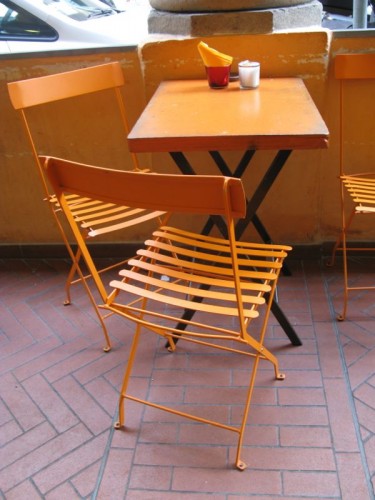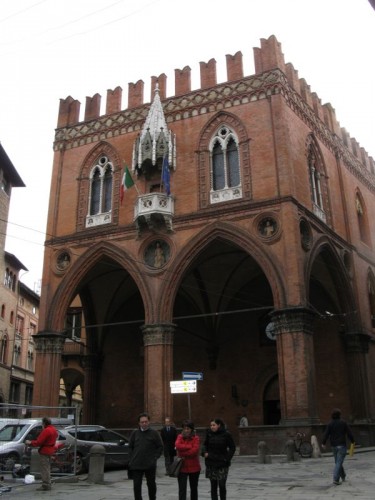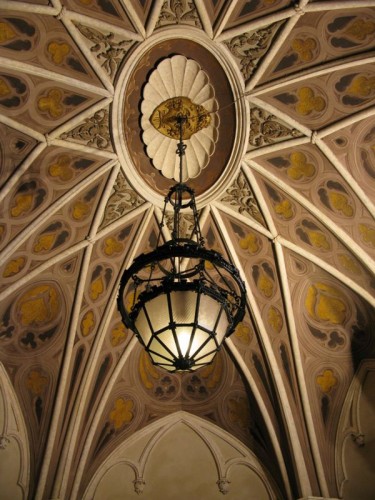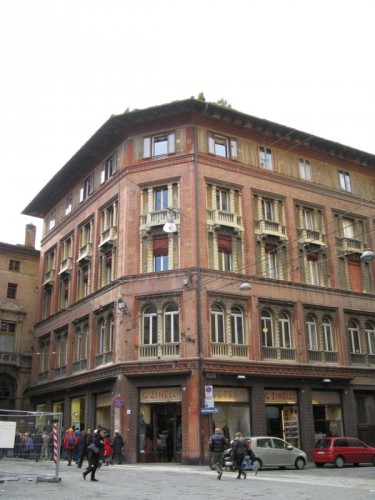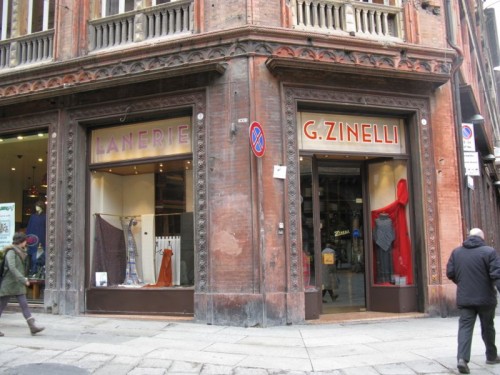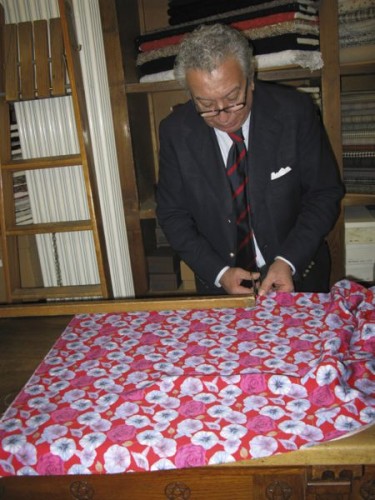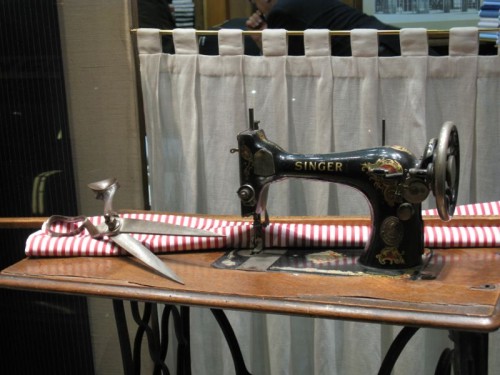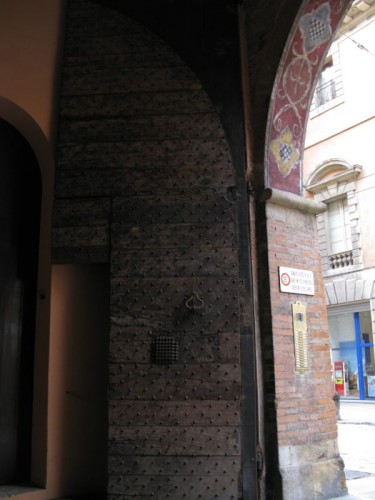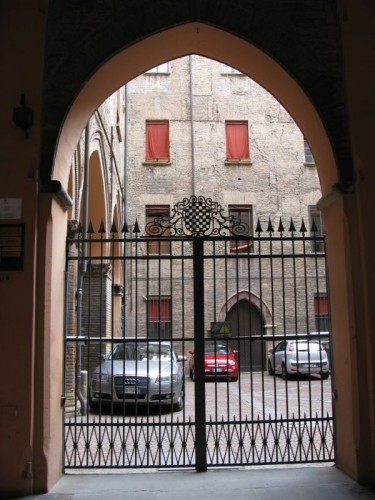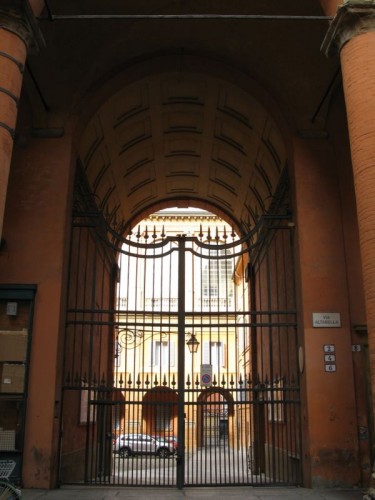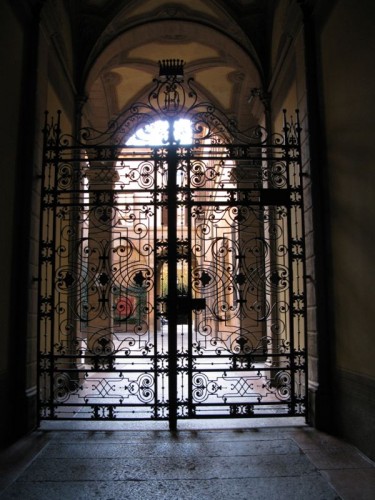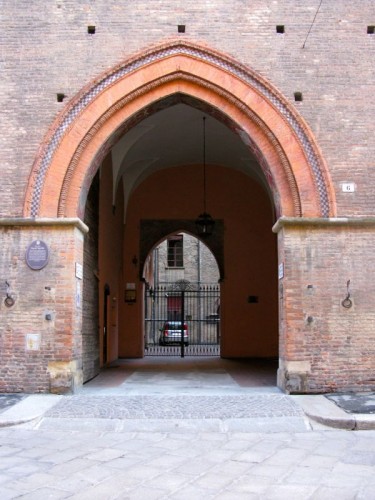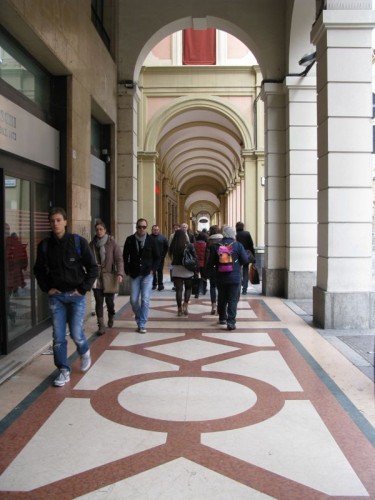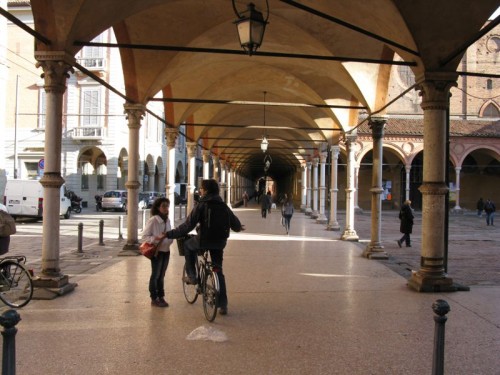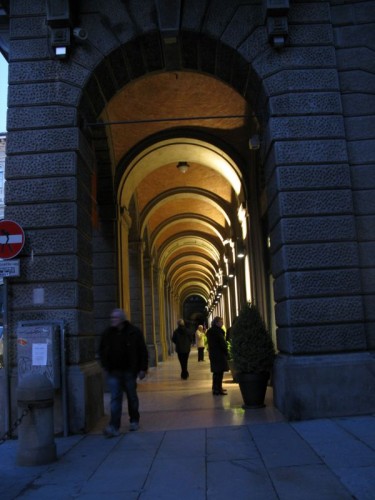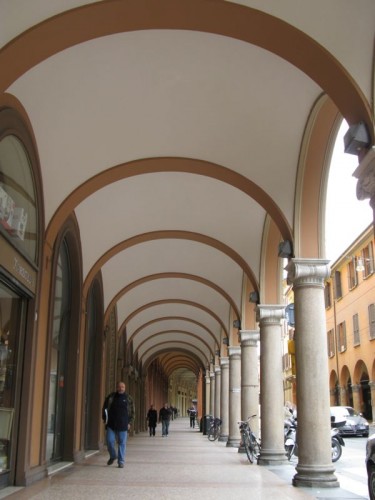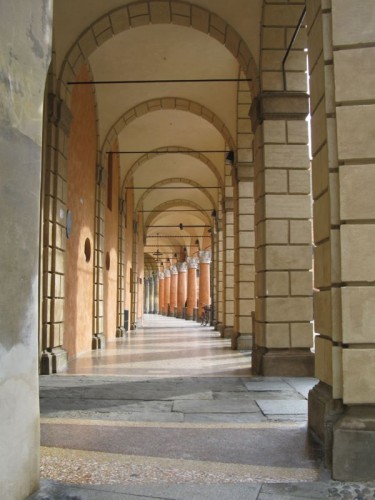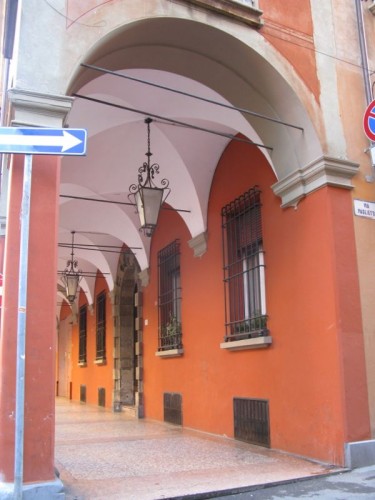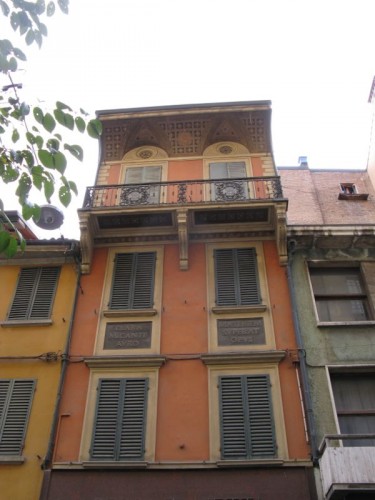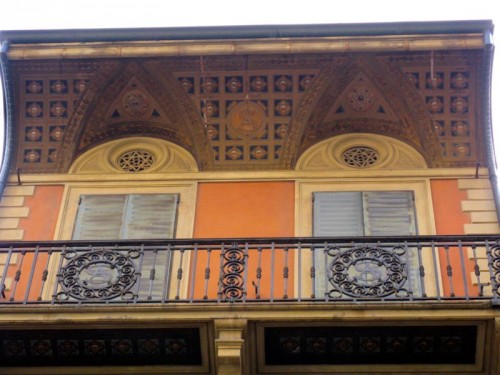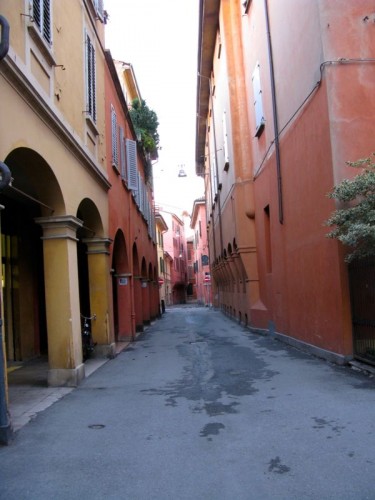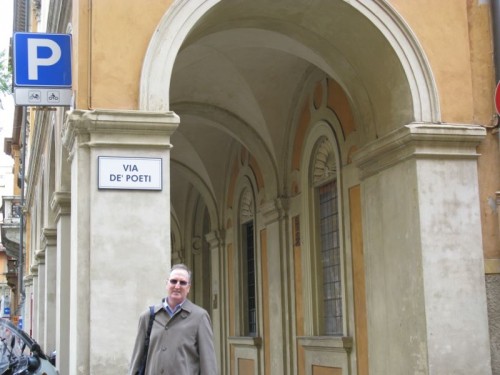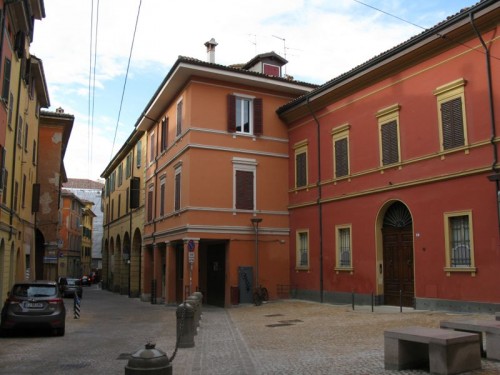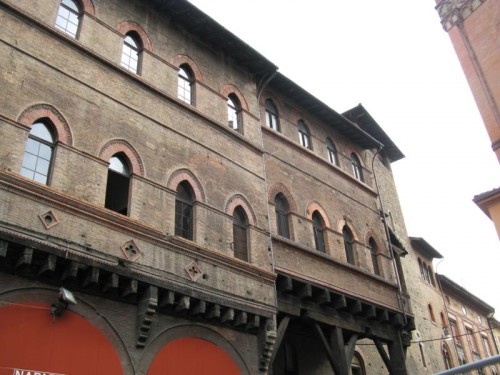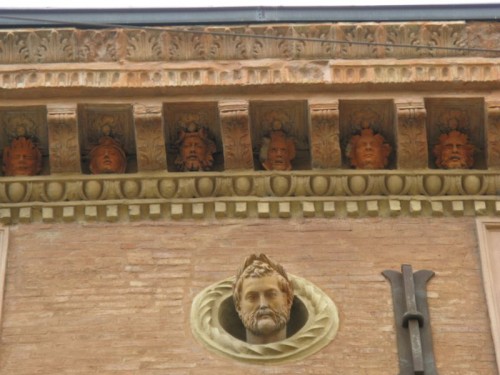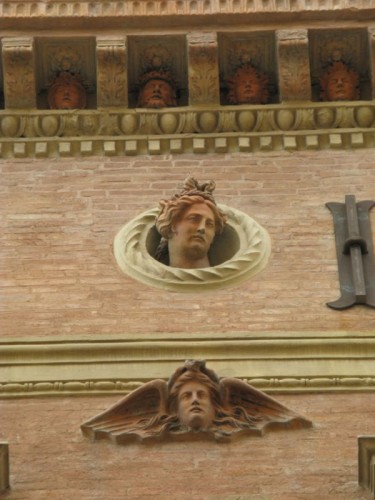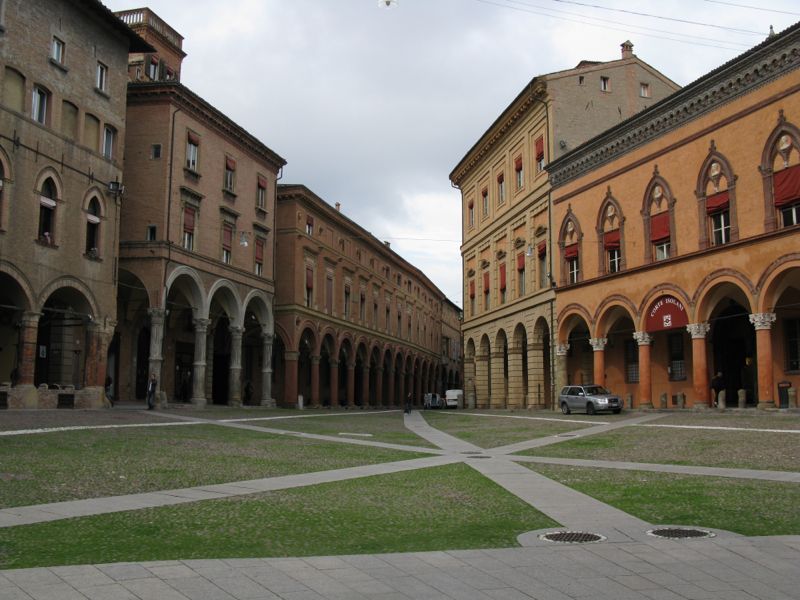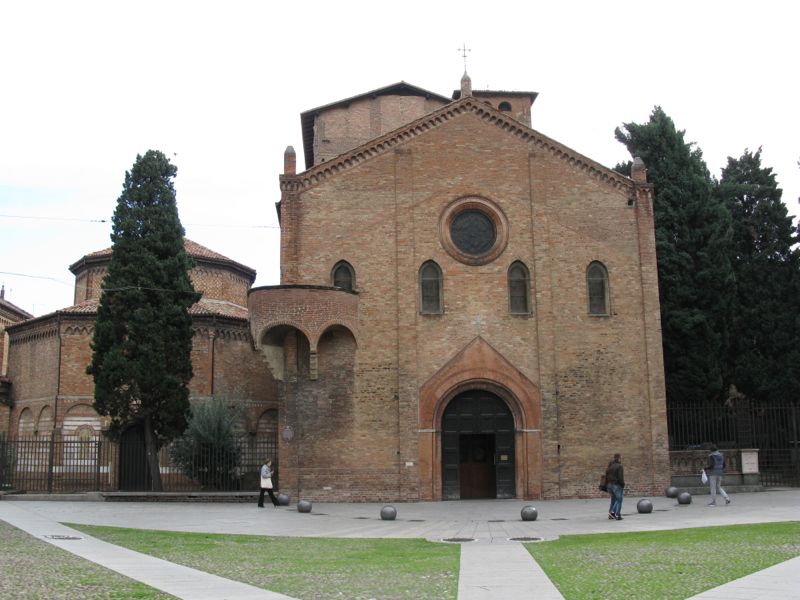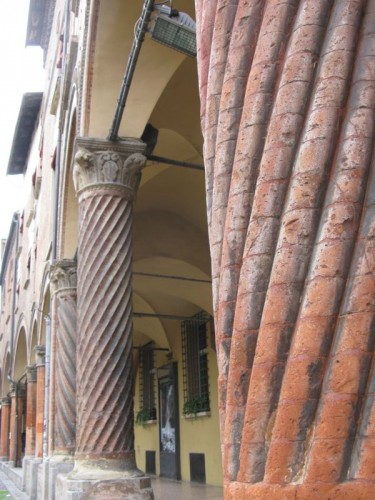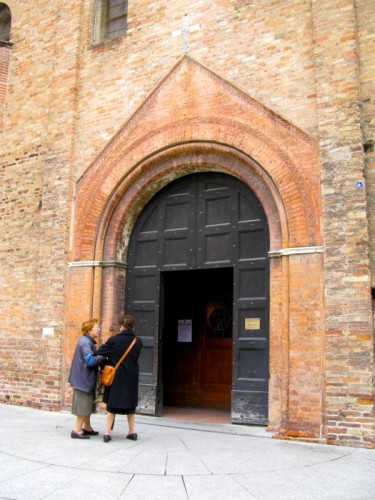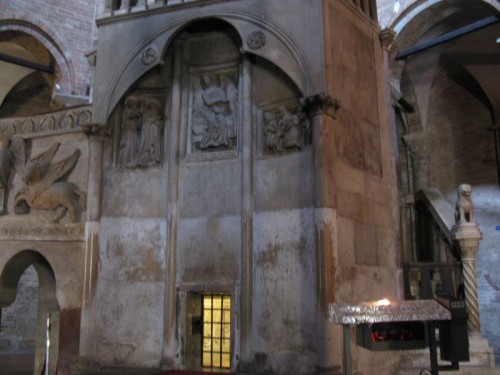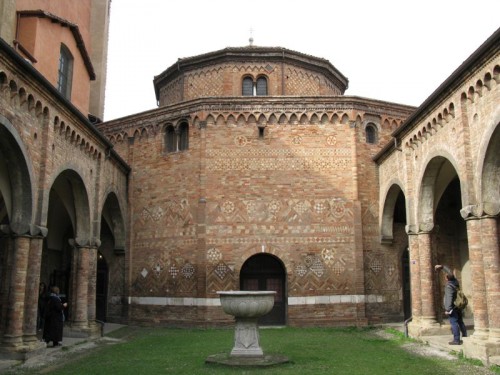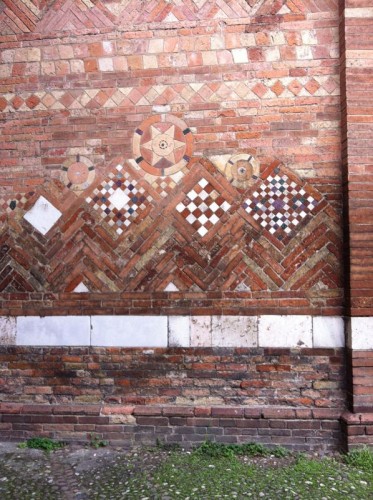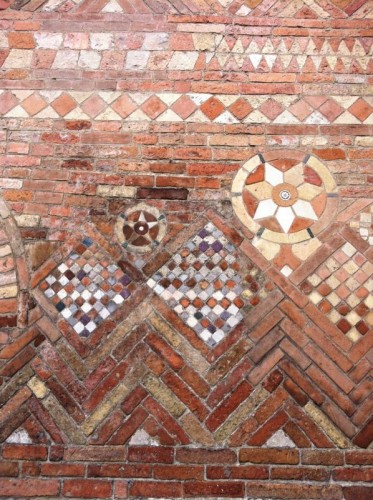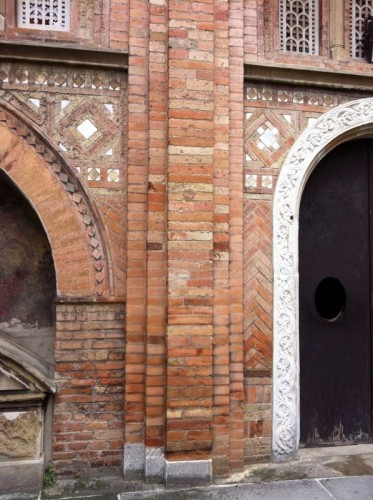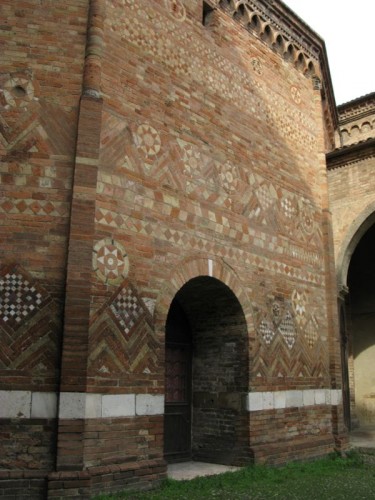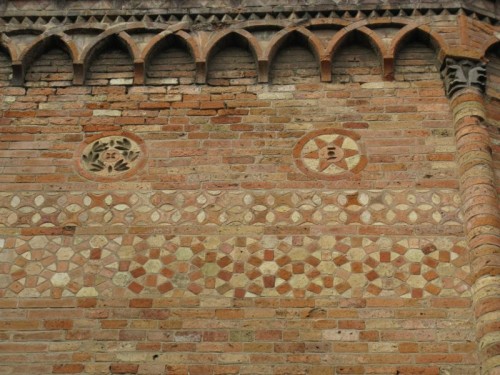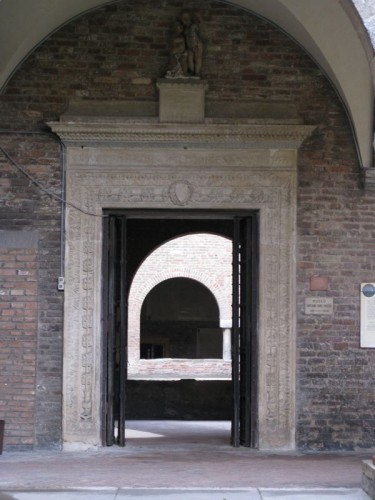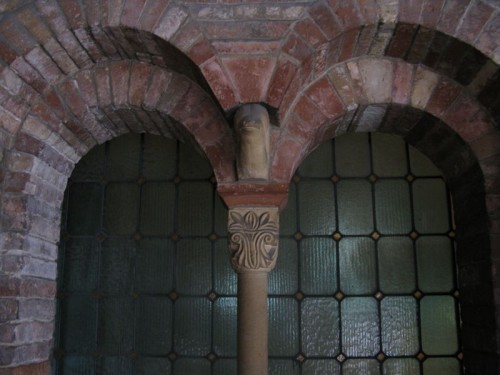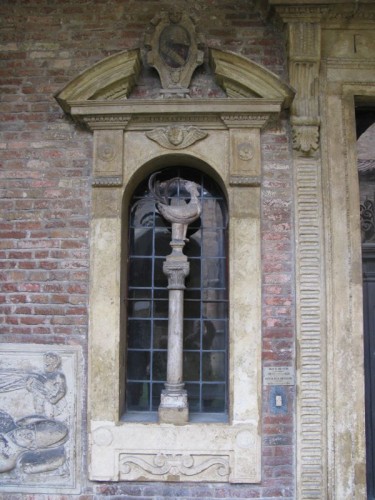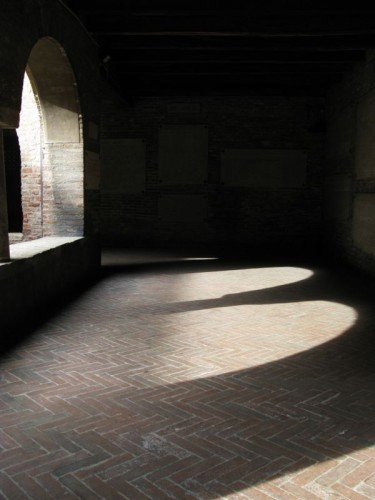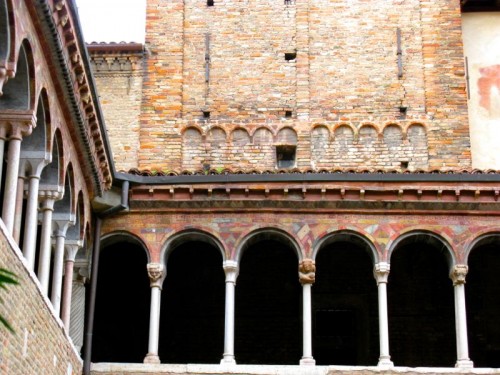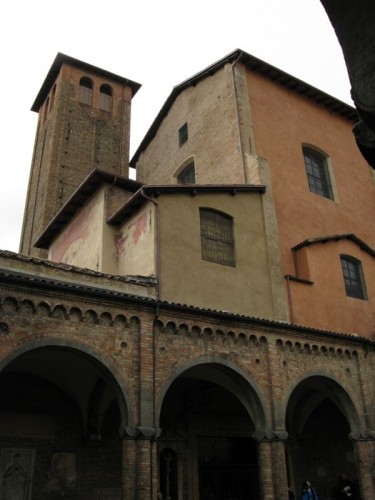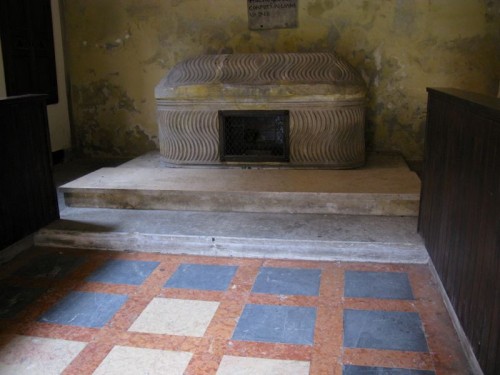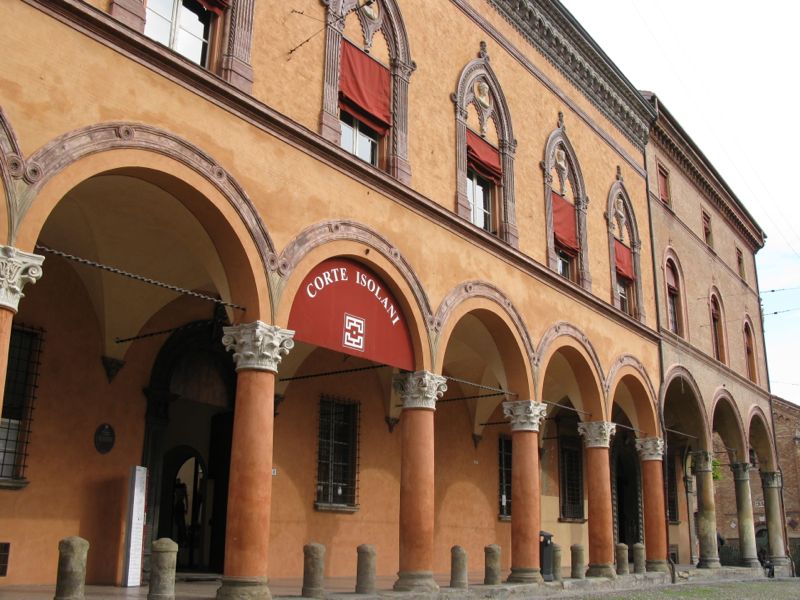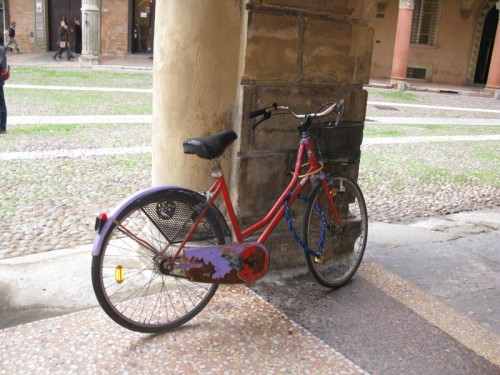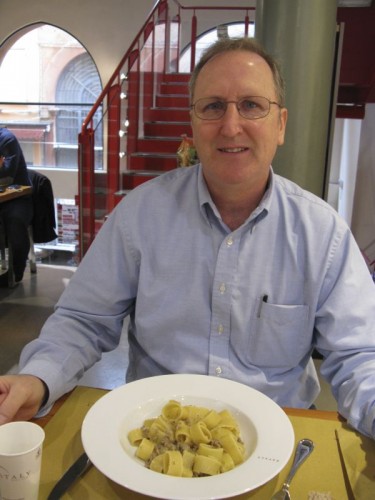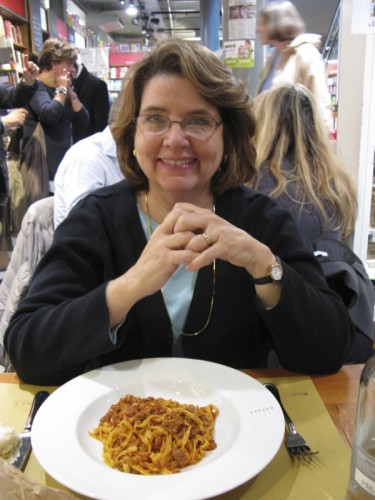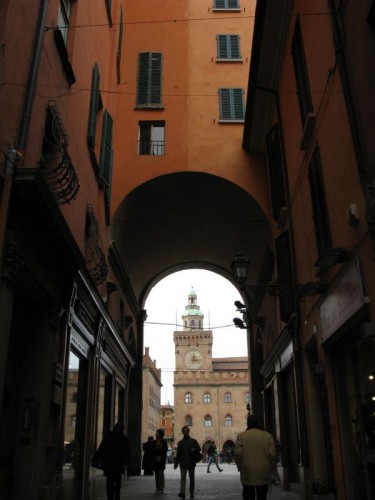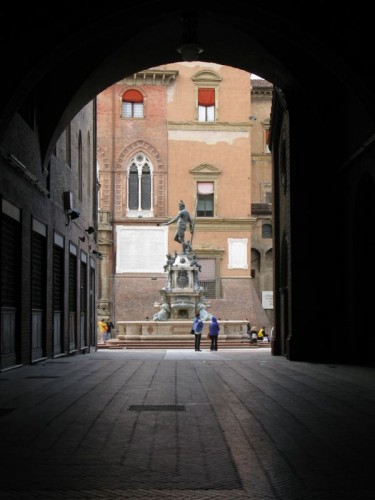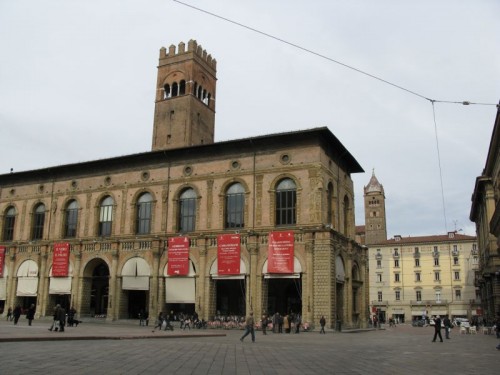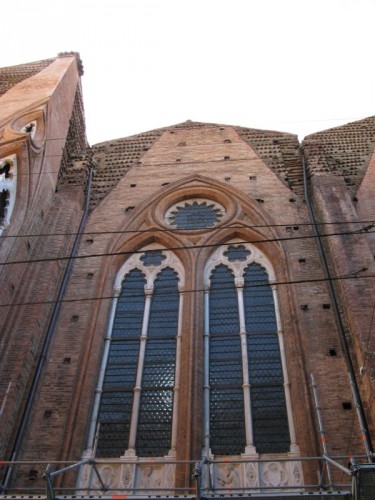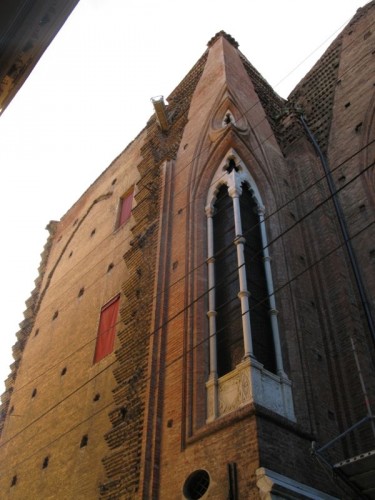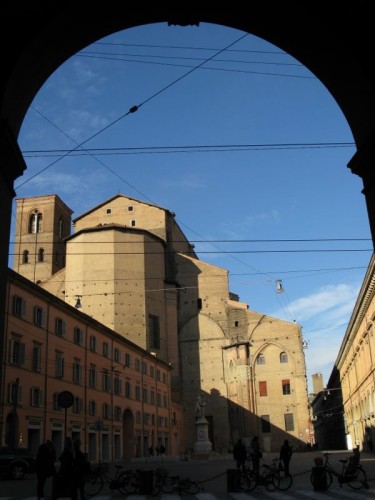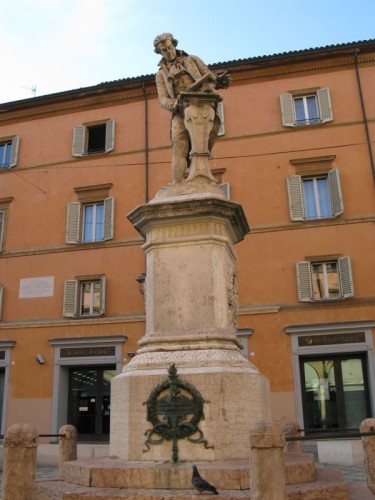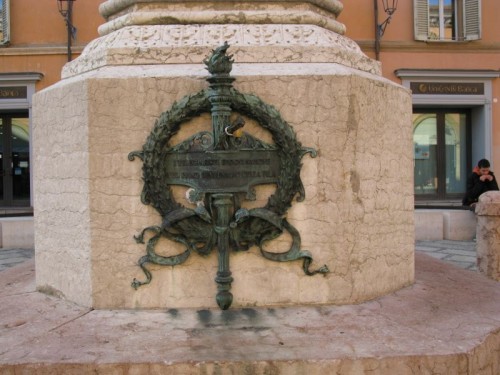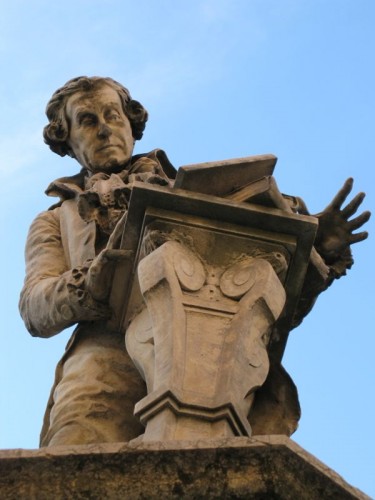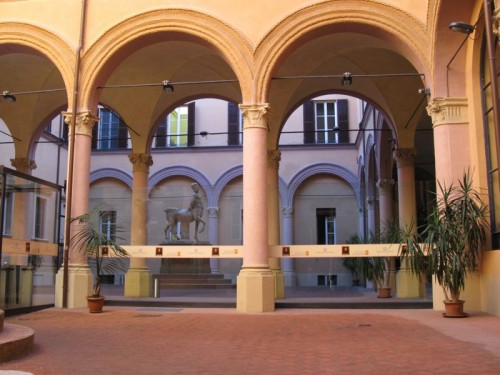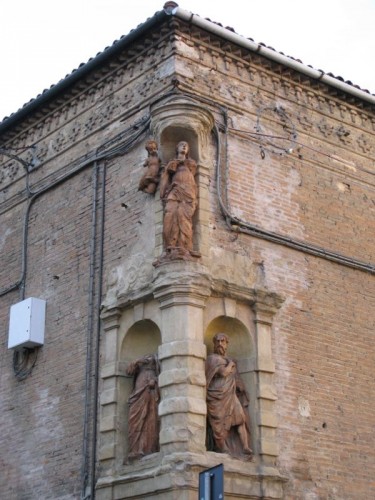Italy 2012, continued
For some reason, I am quite enamored of these slat-seat metal chairs in photos and have taken pictures of them in New York, San Francisco and now Bologna, although this is the first time I’ve seen them in orange. This was outside a noted coffee shop where folks stop for a bit of refreshment, but we’re on the move. No stopping allowed.
The old Bologna Town Hall.
And inside, a beautiful ceiling and light.
Across the square I see this stately building. Wait. Is that what I think it is? I zoom in for a closer look.
Yes! A fabric shop. This one carries high-end fabrics meant for suits and expensive dresses, for tailors and dressmakers. I’m in heaven.
I’ll take a half of a meter, please. It’s a gorgeous piece of wool challis, bound for a scarf. Or something.
Later that night when we passed by their window, we snapped a picture of their display. Everything was very close and all sights in the downtown Old Bologna were within in walking distance of each other. So as a result, we saw some things twice, as we looped around. Still, I would love to come here in more temperate weather, when the sun makes every building glow all day long.
Old door. Dave had stepped inside this area to photograph the gate leading into the inner courtyard. He’d become very adept at finding beautiful filigree gates to photograph as the following pictures can testify:
These gates hint at the inner life of these buildings, and Dave said he nearly got hit by a car while trying to get a good angle on a gate. I guess it was opening out by remote control and the car was behind him, but no worries. He’s nimble.
One hallmark of Bologna are their passageways, their covered walkways with elegant arches.
This is near the University of Bologna, where Dave went for his walkaround in the afternoon when we split up. That university is apparently the oldest in the world, according to Wikipedia, and was founded in 1088. As they note: “it was the first to use the term universitas for the corporations of students and masters which came to define the institution.”
The lady who checked us into our hotel gave us some huge number of miles of covered walkways (or porticoes) something like 66,000 kilometers, but we thought that sounded erroneous. I read later that it’s about 40 kilometers, which is still a lot. They did shield us from the rain, but they are not always contiguous, or continuous.
We thought of Chad when we saw this, as he runs a bike shop out of his garage, unofficially, though.
This is a close-up of the top balcony, as I was interested in the woodwork at the top.
Poetry Way. I loved it.
We knew we were on the right track to San Stefano, when this guy poked out his head and yelled, “It’s straight ahead!”
His wife agreed, although she could have been disappointed with my fashion statement of tourist sneakers. I was amazed that there was a whole chorus of heads about them, all along the eaves of this building.
One thing Italians do well, is set up the shot, or angle by which you approach something. The building with the heads is the far one on the left. Behind us is the church.
The points of these walkways converge to the front door, and that door is also framed by side walkways, more colonnaded porticoes.
We head in. (No, that’s not us.)
This is a map of the complex, and the big door is on Church #1-3. Chiesa del Crocifisso. The only info I could find was in Italian, but it is an old-style church, with the #3 room above the #2 Crypt. No photos were allowed in this area (but it might have been no flash–I don’t know).
We walked to the attached church, which is the octagonal Basilica del Sepolcro, where Petrionius, a Bishop from the 5th century (and who built this complex on top of one where a temple to Isis stood) was buried under a large altar (his tomb is just inside the gated door, in the lit area). Or so one guidebook told us. Of course, I am familiar with the name because of the Petronas Charm spell from the Harry Potter novels. Ah, the usefulness of popular culture.
Then into the Basilica dei SS. Vitale e Agricola, a dark church with slices of stone for window panes.
We made our way back to #6–the Courtyard of Pilate. Some say that the large urn was the same one where Pontius Pilate washed his hands of Christ, but that has been disproven. But it was a delightful place, with lots of intricate brickwork in the design of — I’m convinced — thirteenth century quilt block patterns. Then next door to The Cloisters (#8), back through the Church of the Martyrdom (#7), and we never made it into the other church/museum area (#9-12).
But we did enjoy this courtyard and the cloisters. All told, the construction on these series of churches stretched from the 5th century through to the 14th century, a range of styles and decor from austere and bone-chilling, to intricate and intriguing.
Yeah, okay. I love these designs. Who was it in the 8th century who thought of these? Who gave permission for such frivolity on basically a very austere church? I assume that only those who preached and worked there might see this, so was this to balance out the rest?
Looking into the cloister area.
At the top of this small column in this ancient window is a small sculpture of a snail.
This is a fourteenth century sculpture of a rooster, called the Rooster of St. Peter. For obvious reasons (read that section where Peter had denied the Christ three times before the rooster crowed that morning). I had Dave take the photo because it reminded me of several items in my daughter’s kitchen, when roosters were popular decorating items. Even though Dave and I traveled as a couple, in one way or another, we brought along all our children in our hearts and minds, finding things that reminded us of them. They are such a part of our lives that we cannot leave them behind, no matter where we go or what we see.
The Tomb of Somebody Important. The fact that I don’t know the complete and exact history of this particular little chapel (perhaps if I read Italian?), didn’t obscure the fact that I loved the whole scene — the floor, the wavy lines on the tomb, the peeling ochre paint as a stage set.
Back outside, the colors glow in the sun.
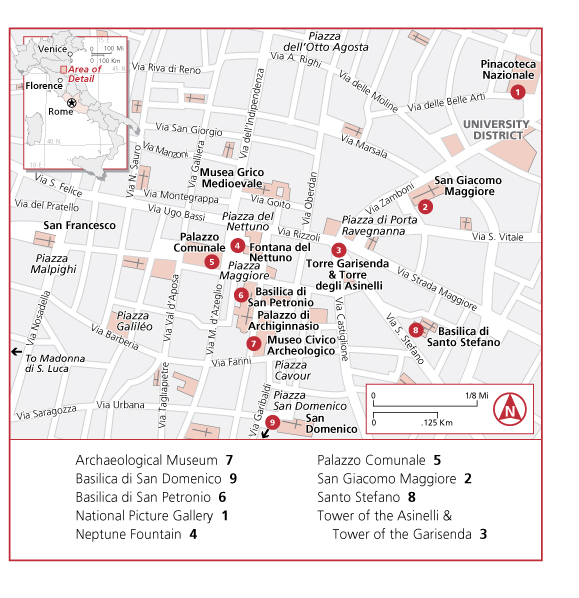 We’ve only hit a few of the things on our list, but we MUST stop for lunch. It was like some invisible alarm went off and all of sudden the restaurants were full to overflowing, packed, even. We survey a few, then find our way upstairs to a little place inside Eataly where they serve lunch. We only have to wait 10 minutes for a table and with some relief sit down.
We’ve only hit a few of the things on our list, but we MUST stop for lunch. It was like some invisible alarm went off and all of sudden the restaurants were full to overflowing, packed, even. We survey a few, then find our way upstairs to a little place inside Eataly where they serve lunch. We only have to wait 10 minutes for a table and with some relief sit down.
Eataly began in New York City, but they’ve since opened places in Italy. How poetic! But our lunch was delicious and wonderful. After lunch, I wander aimlessly around the store, feeling the pressure of souvenir shopping for the folks at home. I’d contemplated giving it up after the last trip, but old habits die hard. After some discussion about shopping (yes, I need to do some shopping and you’re not helping me), we opt for some individual walking around time. I expect to find relief in being by myself to get some serious buying done (Dave will admit to being shopping-adverse), but as soon as he walks out the door and disappears into the street, I regret our separation.
I follow where I think he’s gone, but I can’t see him. I feel so alone, but figure he could probably use the time away from me more than I from him, so I let it be.
Touristing can be a hard business. The fountain of Neptune, as seen through a passageway.
This is the center of Bologna, the Piazza del Maggiore, which you saw in rain-streaked photos at the beginning of our time here. It’s much more glorious in the day.
I wander in and out of the Basilican of St. Petronio, but since they don’t allow photos, it is misty in my aging memory. The outside was monumental, however unfinished (note the ragged brickwork at the top). 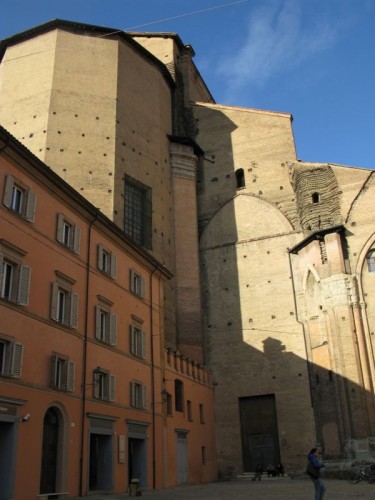
I would have taken photos from the front, from the plaza, but the basilica was draped in reconstruction plastic and it looked like a wide white plastic wall, with cut-outs for doorways.
I went back to Eataly and purchased some balsamic vinegar, an apron and at the tourist office in the Plaza San Maggiore, picked up some more souvenirs. I had purchased a purse when we’d gone to Florence, and so wanted another from this trip to Italy. The lady in the tourist office (“So glad you came to me. I love shopping.”) directed me to one shop in Piazza Cavour, where I found this statue of a musician? professor? Again, if I read Italian, I could help you out with the history and importance, but I can’t. I decided to enjoy it on its artistic merits, surrounded by glowing Bolognian buildings.
I did find out that this is a statue of a famous politician, Camillo Benso, Count of Cavour. Figured. Who’d ever build a statue to a teacher? Or a musician?
The only flaw in my plan to do some serious solo shopping was the fact that most all of the stores close between 1 and 3:30 p.m. So I didn’t buy a purse, nor many souvenirs, but instead walked around (the new Town Hall, above), bought some chocolate, then headed home to wait for Dave.
It was thoughtful of the electrician to run those wires AROUND these corner statues, wasn’t it?
Next post: What Dave did, and the end of our time in Bologna.
